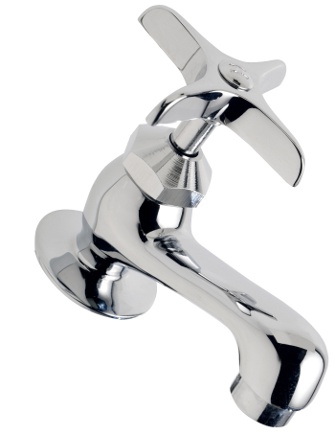Electroplating.net
Your Guide To Electroplating On The Net
Silver Plating, Gold Plating, Chrome Plating, Rhodium Plating...
Chrome PlatingChrome Electroplating Guide 
The technique of electroplating a thin layer of chromium onto a metal object is termed as chrome plating. This plating provides corrosion resistance, eases cleaning procedures, increases the surface hardness and also offers a decorative shine. Though differentiating between chrome plated surface and other polished surfaces is tough; yet it is possible as chrome plating is more reflective, specular (gives mirror like reflection) and bluer than others.
Applications
Hard chrome plating - Also known as engineered chrome or Industrial chromium plating, hard chrome plating is applied as a fairly heavy coating. It helps to add wear resistance, oil retention, reduce friction by increasing lubricity and increase corrosion resistance.
It is known as Hard chrome plating as it is thicker than the decorative treatment and allows scope for performing a hardness measurement. Unlike decorative chrome plating it does not break like an eggshell.
Based on the requirement for various applications like hydraulic cylinder rods, rollers, piston rings, mold surfaces, thread guides, gun bores and many more the quality of plating varies. Variations of Hard chrome plating include thin dense chrome or porous coatings for oil retention.
Mostly done on hardened steel, it renders a metallic appearance though it doesn't produce a reflective, decorative or leveling effect. Two types of Hard chrome plating solutions include Hexavalent chromium baths and Trivalent chromium baths.
Decorative chrome plating – This process is also called nickel chrome plating as it sometimes involves electroplating nickel or both copper and nickel before thinly plating the chrome. Nickel adds a smooth; non-corrosive and reflective touch to it. Chrome further adds a bluish cast and prevents the nickel against tarnish thus minimizing scratches and corrosion. Black chrome plating attained with an impurity that renders a smoky grey or completely black finish to the metal often act as an ornamental finish.
The Process
The chrome plating process involves polishing followed by buffing, cleaning and subsequent acid dipping, then zincating (for an aluminum part), and finally copper plating. To add reflectivity, the process is succeeded by copper buffing for a perfectly smooth finish, and cleaning furthered by acid dipping. It is then plated with more copper and 2-3 kinds of nickel before actually plating it with chrome. Every step must be interspaced by rinsing.
Re-chroming involves stripping the layers of nickel and chrome to polish the blemishes followed by copper plating and mush buffing before repeating the chrome plating process. Re-plating involves a greater cost compared to having a new chrome plated replacement.
Defects and alternatives
Disposal of byproducts
Disposing off the wastes like Chromic Acid, dilute rinse water, etc. require pretreatment and permits. Such hazardous wastes need to be duly treated and monitored. Exhaust scrubbing; fume suppressants and medical surveillance are preferable at regular intervals.
|
Electroplating Info Electroplating Process Silver Plating Gold Plating Chrome Plating Home Electroplating Kits Contact Us
Electroplating Guide On The Net
© Copyright Electroplating.net, 2010. All Rights
Reserved.
www.electroplating.net
 There are various applications of chrome plating. These include hard
chrome plating and decorative chrome plating.
There are various applications of chrome plating. These include hard
chrome plating and decorative chrome plating.